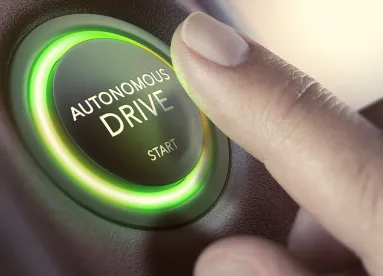As autonomous vehicles and associated software become more commonplace in the automotive industry, it is important to recognize which forms of intellectual property grant protection within quickly evolving areas of technology and to understand how to obtain registration and enjoy the advantages within an increasingly competitive landscape. Autonomous vehicles are unique in the automotive industry because they incorporate new forms of technology not commonly embedded in automobiles. This can include, image recognition systems, LIDAR (Light Detection and Ranging), and most importantly complex software incorporating artificial intelligence and machine learning. Intellectual property protection enables autonomous vehicle developers to get ahead of their competitors, create an environment in which research and innovation are incentivized, stop others from infringing protected technology, and can allow technology to be further monetized through licensing agreements.
A comprehensive IP strategy using both patents and copyrights can help protect key technology.
Patent Protection
The U.S. Patent and Trademark Office will generally grant a software patent for autonomous vehicles once it is shown to overcome two hurdles to patentability: (1) a showing that the claimed subject matter is neither anticipated nor obvious based on the prior art, and (2) a showing that the claimed subject matter is not directed to a “judicial exception” (e.g., an abstract idea), or if it is, that the claim as a whole includes additional limitations amounting to “significantly more” than the exception. Through careful drafting, patents can protect the algorithms or methods used in the software, user interfaces for the software itself, and data processing techniques.
Two types of patents are most relevant here: utility patents and design patents. Utility patents protect functional aspects of an autonomous vehicle for 20 years. Design patents protect the ornamental appearance of an autonomous vehicle’s components for 15 years. A utility patent may protect the functional aspects of an autonomous vehicle, such as the transmission or the machine learning software that drives the vehicle. A design patent may protect ornamental designs, such as a user interface appearance of an infotainment console connecting the driver to the software. As autonomous vehicles become more ubiquitous, the interface and interactions between the software and the driver will be more prevalent and important to protect.
When it comes to software or other computing technology, a utility patent cannot protect the idea or the math alone, but instead must apply that idea or math to something. Practitioners will sometimes refer to this requirement informally as a “technical effect” or “technical solution to a technical problem.” For example, a patent cannot protect the idea of mobile-device tracking, but a patent for mobile-device tracking software was deemed valid because it recited the hardware and software details of a specific implementation. Likewise, a patent cannot protect the idea of steering a car, but a patent can protect a specific software program that executes a method of autonomous driving by applying a particular artificial intelligence on LIDAR and computer vision inputs.
Copyright Protection
A software patent protects the functionality of the software for 20 years, whereas a copyright protects the code itself for the duration of the life of the author plus 70 years. Combining these two forms of protection provides diverse protection over software innovations and strengthens the IP portfolio. However, registering software for copyright has its own challenges.
Under copyright law, the software is considered a literary work and is eligible for protection if the software is (1) a work of authorship, (2) original, and (3) fixed in a tangible medium of expression. Copyright law protects authors of literary works, but an author must be human. This was recently affirmed in the Midjourney case where the US Copyright Office held that images created by the Midjourney AI were not protected by copyright because they are not products of human authorship.
Recently, the automotive industry is experiencing an increased volume of collaboration between major manufacturers and smaller entities when developing autonomous vehicle software and training the underlying AI/ML models, raising the issue of training models as a source of copyright protection. To better train software models for autonomous vehicles, major manufacturers are likely to outsource some aspects of their software being developed to third parties. These models are not technically copyrightable because they are being trained and “authored” by data and not by a human author. It is critical that ownership over the software-executed models and the input and output data are clearly established.
As more automobile manufacturers incorporate artificial intelligence and machine learning into their software, there comes an issue with licensing. This is a new area of law with questions and issues about ownership of the trained model and whether the trained model is considered a separate work. Issues can arise if licensing provisions do not outline in specificity the outcome of these models, the trained models, the training data, and the output data. To avoid these issues, it is essential licensing agreements contain provisions about ownership of autonomous vehicle software and further derivatives to proactively prevent potential issues and litigation.




 />i
/>i
